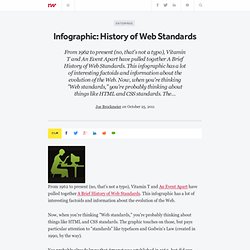

Dieter Rams’ 10 Principles of Good Design and How to Apply Them in Graphic Design. Articles April 25, 2012 After discussing the Vignelli Canon, we’re going to delve more into design principles applied in the different fields of design today.

One designer that I’ve always admired is the industrial designer, Dieter Rams. His works within different industries have become classic standards of simple, elegant, and lasting design. Yet though his principles of design have spread throughout the world, there are still far more thoughtlessly-designed products out in the market. Industrial Design for Graphic Design Industrial design is the process of creating a product that combines the best of aesthetics, ergonomics, and usability. (Source) As Vignelli would say, design is a language. The Ten Principles of Good Design Dieter Ram’s principles can be compared to Massimo Vignelli’s canon. Graphic Design… Is Innovative As Austin Kleon would put it, steal like an artist.
(Source) Is Aesthetic Graphic design is more than a visualized idea. How To Create Outstanding Infographics. In this tutorial you will learn that data doesn't have to be boring, it can be beautiful!

Learn how to use various graph tools, illustration techniques and typography to make an accurate and inspiring infographic in Adobe Illustrator. Start by using the Rectangle Tool (M) to draw a shape. Give it a subtle radial gradient too. The entire design is based on a grid of four columns. To make the columns first select the rectangle and drag a guide onto the centre of the shape. Condense the shape so it fits within the left-most guide and centre guide. Move the shape over to the right and add another guide to the centre here. Using the Rectangle Tool (M) draw a thin white box on the centre line that will be the width of the gap between the columns. Repeat the process for the other columns with your final result being below. I like to place the most important graphics first and work-in the ancillary charts and graphs afterwards. Give the circles a variety of gradients. That's it! How To Create Outstanding Modern Infographics.
10 Awesome Tools To Make Infographics. Advertisement Who can resist a colourful, thoughtful venn diagram anyway?

In terms of blogging success, infographics are far more likely to be shared than your average blog post. This means more eyeballs on your important information, more people rallying for your cause, more backlinks and more visits to your blog. In short, a quality infographic done well could be what your blog needs right now. Designing An Infographic Some great tips for designing infographics: Keep it simple! Ideas for infographic formats include: Timelines;Flow charts;Annotated maps;Graphs;Venn diagrams;Size comparisons;Showing familiar objects or similar size or value. Here are some great tutorials on infographic creation: Creating Your Infographic Plan and research.If required, use free software to create simple graphs and visualisations of data.Use vector graphic software to bring these visualisations into the one graphic.
Free Online Tools For Creating Infographics Stat Planet Hohli Creately New York Times Many Eyes Wordle. How Not To Make An Infographic. How To Create Outstanding Infographics. An Infographic About Infographics (Build 20110413222027) Infographic: History of Web Standards. From 1962 to present (no, that's not a typo), Vitamin T and An Event Apart have pulled together A Brief History of Web Standards.

This infographic has a lot of interesting factoids and information about the evolution of the Web. Now, when you're thinking "Web standards," you're probably thinking about things like HTML and CSS standards. The graphic touches on those, but pays particular attention to "standards" like typefaces and Godwin's Law (created in 1990, by the way). You probably already knew that Arpanet was established in 1962, but did you know that "hypertext" was coined in 1965 by Ted Nelson?
What about the fact that only 1.9% of the world's population were using the Internet in 1998? Some other interesting tidbits: The first Web site went online in December of 1990. The predictions are pretty conservative, especially the last: "People will continue to complain that the W3C moves too slowly and that browser vendors make stuff up too willy-nilly. "